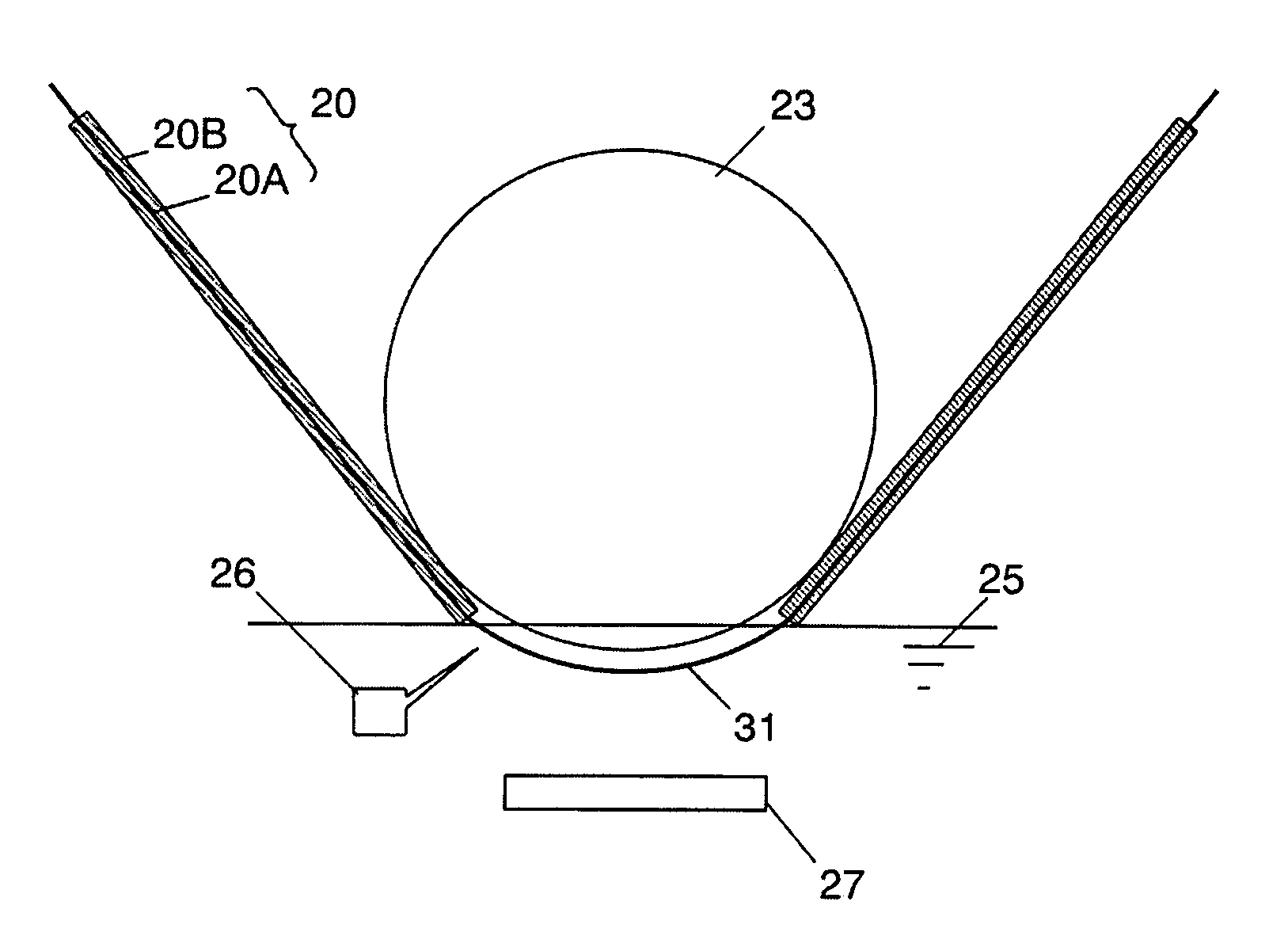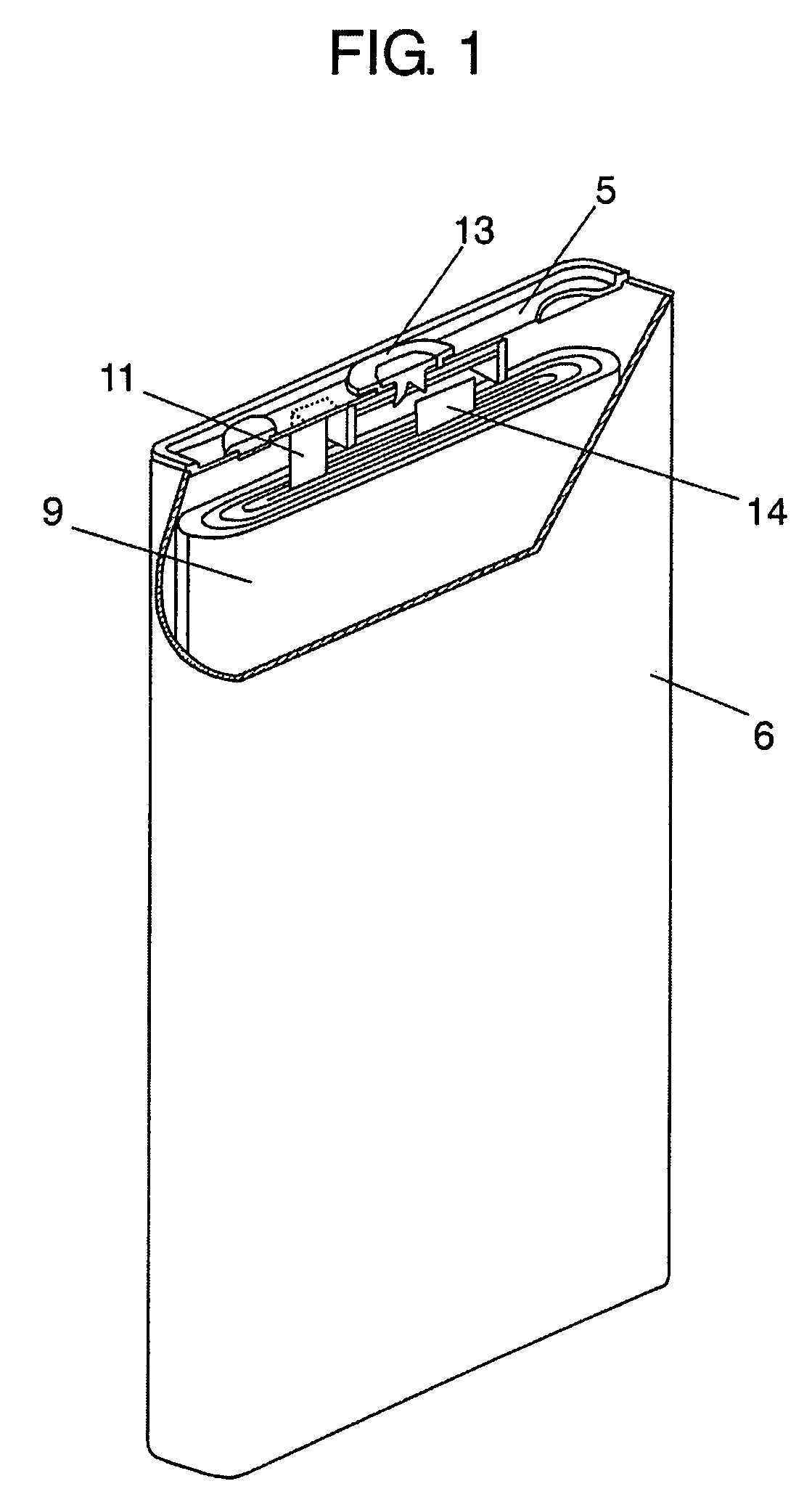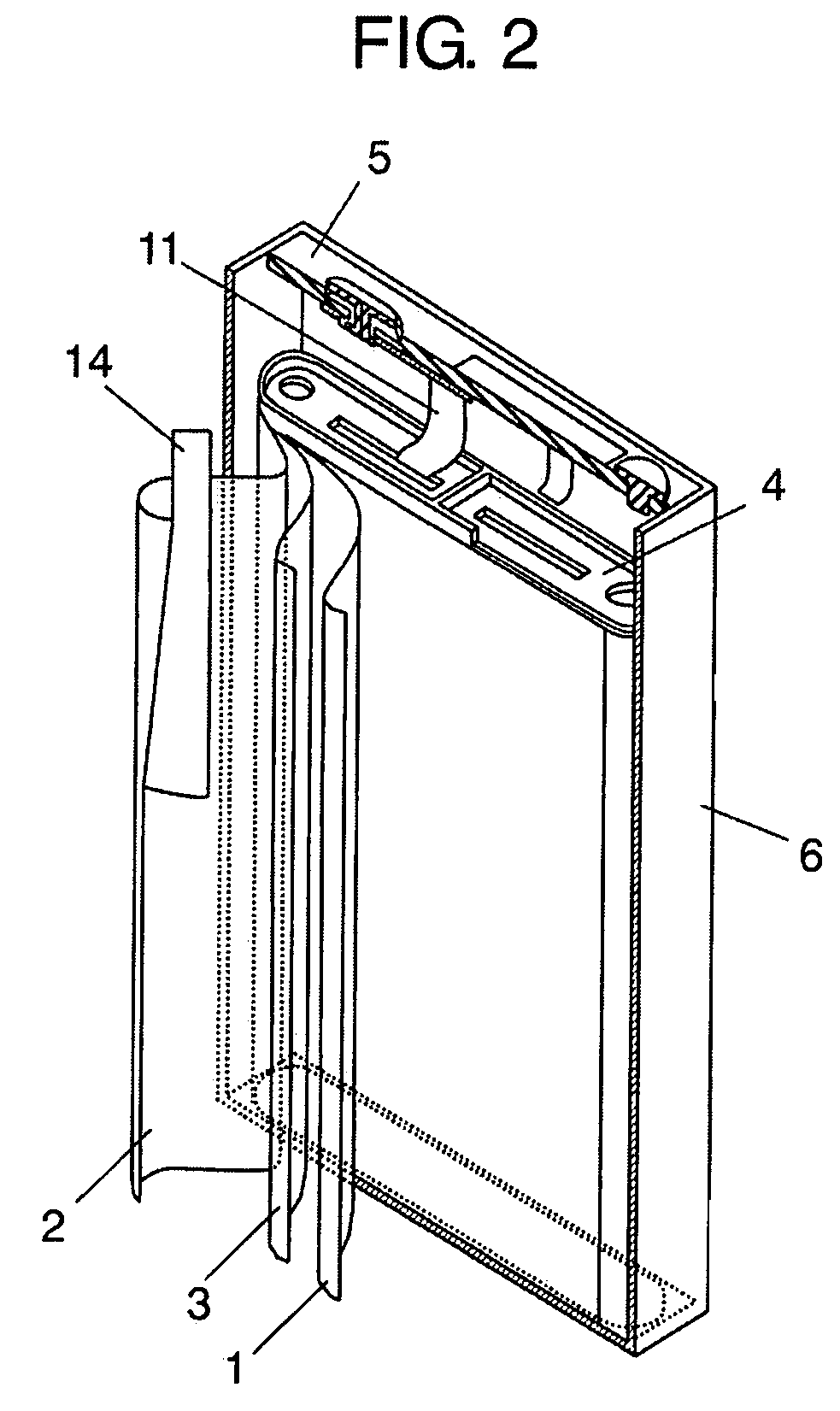Method and apparatus for manufacturing negative electrode for non-aqueous electrolyte secondary battery
a technology of non-aqueous electrolyte and secondary batteries, which is applied in the field of methods and apparatus for manufacturing negative electrodes for non-aqueous electrolyte secondary batteries, can solve the problems of reduced battery capacity, inability to meet the needs of inability to use high-capacity active materials of negative electrodes. achieve the effect of improving productivity and large capacity density of negative electrode active materials
- Summary
- Abstract
- Description
- Claims
- Application Information
AI Technical Summary
Benefits of technology
Problems solved by technology
Method used
Image
Examples
first embodiment
[0033]FIG. 1 is a partial cut-away perspective view showing a non-aqueous electrolyte secondary battery in accordance with a first embodiment of the present invention; and FIG. 2 is an exploded perspective view showing the non-aqueous electrolyte secondary battery. This prismatic battery includes negative electrode 1, positive electrode 2 facing negative electrode 1 and reducing lithium ions at the discharging time, and separator 3 inserted between negative electrode 1 and positive electrode 2 and preventing negative electrode 1 and positive electrode 2 from being brought into direct contact with each other. Negative electrode 1 and positive electrode 2 together with separator 3 are wound so as to form electrode body 9. Electrode body 9 together with a non-aqueous electrolyte solution (not shown) is accommodated in case 6. On the upper part of electrode body 9, resin frame 4 is disposed for separating electrode body 9 and lid 5 from each other and separating lead 11 and case 6 from ...
second embodiment
[0089]FIG. 9 is a schematic configuration view showing an apparatus for allowing a negative electrode active material layer of a negative electrode precursor to absorb lithium ions in accordance with a second embodiment of the present invention. In the present embodiment, support rolls 33A and 33B are provided in non-aqueous electrolyte solution 25 and negative electrode precursor 20 is stretched between the support rolls. Then, active material layers 20B on both surfaces of negative electrode precursor 20 are allowed to absorb lithium ions continuously.
[0090]Specifically, non-aqueous electrolyte solution 25 is provided with a pair of electrode 27A and reference electrode 26A and a pair of electrode 27B that is the same as electrode 27A and reference electrode 26B that is the same as reference electrode 26A. Electrodes 27A and 27B are disposed opposite to each other with respect to negative electrode precursor 20. Reference electrode 26B is disposed in the vicinity of negative elect...
third embodiment
[0094]The detailed contents of configuration, materials, and the like, of a non-aqueous electrolyte secondary battery in accordance with the present embodiment are the same as those of the first embodiment.
[0095]Here, with reference to FIG. 10, an apparatus for allowing a negative electrode active material layer of a negative electrode precursor to absorb lithium ions is described. FIG. 10 is a schematic configuration view showing an apparatus for allowing the negative electrode active material layer of the negative electrode precursor to absorb lithium ions.
[0096]Negative electrode precursor 20 produced by the same method as in the first embodiment includes a current collector and active material layers formed on the surface (both surfaces) of the current collector. Negative electrode precursor 20 is supplied in a state in which it is wound on supply roll 21. Supply roll 21 is a winding-out portion for pulling out negative electrode precursor 20 that has been wound up.
[0097]This ap...
PUM
| Property | Measurement | Unit |
|---|---|---|
| pressure | aaaaa | aaaaa |
| angle | aaaaa | aaaaa |
| speed | aaaaa | aaaaa |
Abstract
Description
Claims
Application Information
 Login to View More
Login to View More - R&D
- Intellectual Property
- Life Sciences
- Materials
- Tech Scout
- Unparalleled Data Quality
- Higher Quality Content
- 60% Fewer Hallucinations
Browse by: Latest US Patents, China's latest patents, Technical Efficacy Thesaurus, Application Domain, Technology Topic, Popular Technical Reports.
© 2025 PatSnap. All rights reserved.Legal|Privacy policy|Modern Slavery Act Transparency Statement|Sitemap|About US| Contact US: help@patsnap.com



